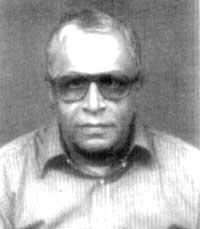Guru Vandanam
SEMMANGUDI - HIS MUSICAL PROWESS - PART 1

A salutation by Sri V Subramanyam, one of the premier disciples of Semmangudi Srinivasa Iyer, who at 92 is perhaps the oldest performing artiste in the world!
Guru Vandanam |
|
SEMMANGUDI - HIS MUSICAL PROWESS - PART 1 |
|
|
A salutation by Sri V Subramanyam, one of the premier disciples of Semmangudi Srinivasa Iyer, who at 92 is perhaps the oldest performing artiste in the world! |
| To be in the top echelon of Carnatic music as a
vocalist for over seven decades is no mean achievement. Dr. Semmangudi Srinivasa Iyer is a
living legend still ready and able to give concerts at 92 plus. God blessed him with an
abundance of "Sangeetha Gnanam" (musical insight), apparently to
compensate for his lack of voice felicity. Sri Srinivasa Iyer spared no efforts to do
tireless "Sadhana" (practise) to tame his voice to favourably respond
to his reservoir of musical prowess. It is commonly observed that musicians with
uncooperative voices bring forth music laden with more "bhavam"
(emotion/passion). An analytical study of the various aspects of music handled by the veteran would reveal the forces, which shot him, aloft to great heights in the sphere of Carnatic music. |
|
| His Patanthara: Carnatic music has been handed down the generations through the oral tradition, especially the creations of great composers. The core of Carnatic music being the use of 'anuswaras' (minute notes) and 'gamakas' (musical ornamentations) and subtle nuances, only a guru could impart such subtleties correctly. A written notation of a composition shows only the basic structure of the piece and not the nuances. Even a recorded rendition of a song cannot replace the guru in conveying the finer aspects of the Raga bhava (the spirit of the Raga). Sri Semmangudi
Srinivasa Iyer belongs to the Tyagaraja sishya parampara (musical lineage), and
in particular, the Umayalpuram school, which is acknowledged as one of the most authentic
in the rendition of the compositions. |
| Semmangudi's concerts
- Part 2 Semmangudi's handling of Raga alapana - Part 3 Semmangudi's handling of Tanam and Pallavai - Part 4 |